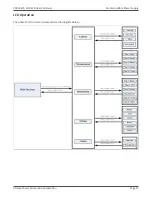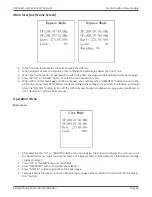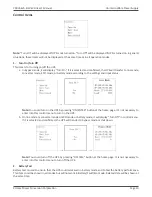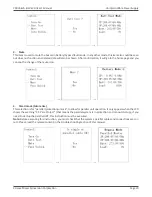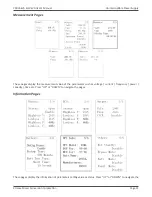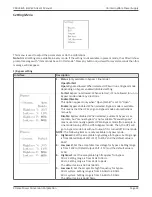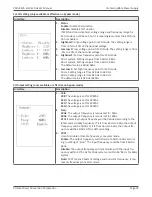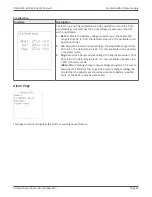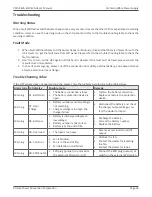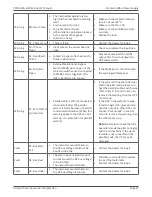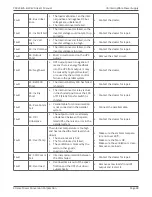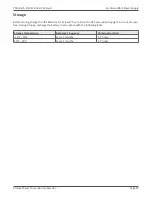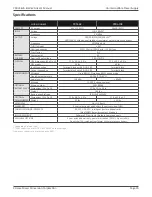
Xtreme Power Conversion Corporation
P90L 6kVA & 10kVA User’s Manual
Page 15
Uninterruptible Power Supply
ning and the UPS supplies power to the loads via bypass; (The UPS is operating in Bypass mode.)
Note:
When UPS is in Bypass mode, the output voltage comes directly from utility, so the load is not pro
-
tected by the UPS. To protect the load, the UPS should be turned on to Line mode.
2.
When LCD is on home screen, press the “ON/ENTER” button, LCD will show a prompt page of “Turn On”;
Move the arrow to “Yes” by up or down button, then press “ON/ENTER”, the UPS will beep once and start
UPS. You could also enter the “control menu” to select the instruction “Turn On” to startup the UPS. Please
refer to the section of “LCD operation”.
3. A few seconds later, the UPS will enter into Line mode; “Line mode” will be displayed on LCD. (In line
mode, if the utility power is abnormal, the UPS will transfer to Battery mode without interruption.)
Turn on the UPS without utility power supply (to Battery mode)
1.
Make sure the battery is connected and the battery pack breaker is in the “ON” position;
2.
Press the “ON/ENTER” button to start up the internal power, the UPS will enter into bypass mode without
output;
3. When LCD is on home page, press the “ON/ENTER” button, LCD will show a prompt page of “Turn On”;
Move the arrow to “Yes” by up or down button, then press “ON/ENTER”, the UPS will beep once and start
up. You could also enter the “control menu” to select the instruction “Turn On” to startup the UPS. Please
refer to the section of “LCD operation”.
4.
A few seconds later, the UPS will enter into Battery mode; “Battery mode” will be displayed on LCD (In
Battery mode, it will shutdown automatically when battery is depleted. If the utility power is restored, it
will auto restart to Line mode.)
Connect devices to UPS
After the UPS is turned on, you can add load to the UPS.
1.
Turn on the UPS first and then switch on the load devices one by one, the LCD panel will display total load
level.
2.
If inductive loads, such as a printer, are connected, the in-rush current should be calculated carefully to
see if the capacity of the UPS is sufficient due to the huge starting power consumption of this kind of load.
3. If the UPS is overloaded, the buzzer will beep twice every second.
4.
When the UPS is overloaded, please remove some loads immediately. It is recommended to have the total
load connected to the UPS be less than 80% of its nominal power capacity for system safety.
5. If the overload time exceeds duration listed in the spec at Line mode, the UPS will automatically transfer to
bypass mode. After the overload is removed, it will return to Line mode. If the overload time exceeds du
-
ration listed in spec at Battery mode, the UPS will enter fault status. At this time, if bypass is enabled, the
UPS will power the load via bypass. If bypass function is disabled or the input power is not within bypass
acceptable range, it will cut off the output immediately.
Charge the batteries
1.
After the UPS is connected to the utility power, the charger will charge the batteries automatically except
in Battery mode or during battery test;
2.
Suggest charging batteries at least 4 hours before use. Otherwise, the backup time may be shorter than
expected;
3. Make sure the battery numbers setting on the control board (Please refer to the section of changing bat
-
tery quantity) is consistent with actual connection.
Battery mode operation
1.
When the UPS is in Battery mode, the buzzer will beep according to the battery capacity. Normally, the
buzzer will beep once every 4 seconds in battery mode, but when the battery voltage drops to the alarm
level, the buzzer will beep once per second and the UPS will shut down automatically when the battery
reaches cutoff level. Users could switch off some non-critical loads to delay the shutdown alarm and pro
-
long the backup time. If there is no more load to be taken off at that time, you must shut down all loads as
soon as possible to protect the devices or save data. Otherwise, there is a risk of data loss or load failure.

















